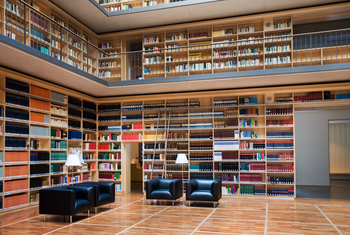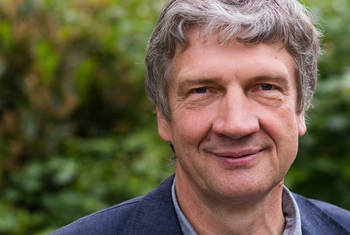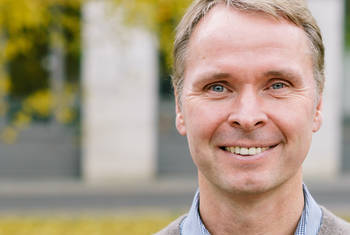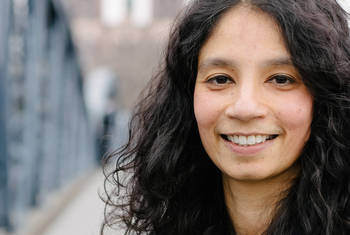Andrei N. Lupas How Did the Three-Dimensional Structures of Proteins Evolve in Nature?
Andrei N. Lupas is Director and Scientific Member at the Max Planck Institute for Developmental Biology. Between 1985 and 1990 he studied molecular biology at Princeton University (USA), where he received his PhD in 1991. In his research, Lupas concentrates on the evolution and classification of proteins, one of the essential building blocks of living cells. Lupas seeks to understand the folding process of the three dimensional structure which makes up the protein.
Area of Research
Developmental Biology
since 2001
2011-2014
Chairman of the Biology and Medicine Section
Max Planck Society
2005-2011
Committee for the Appointment of Max Planck Research Groups
Max Planck Society
2004-2007
Steering Committee of the Digital Information Program
Max Planck Society
2002-2015
Member of the Research Perspectives Committee of the Biology and Medicine Section
Max Planck Society
1998-2001
Assistant Director of Bioinformatics
GlaxoSmithKline, Collegeville, USA
1997-1998
Senior Computational Biologist
SmithKline Beecham, Collegeville, USA
1993-1997
1991-1993
Postdoctoral Fellow
Ludwig Maximilian University Munich (Ludwig-Maximilians-Universität München)
Gene Center
1991
Postdoctoral Fellow
Princeton University
1991
PhD
Princeton University
Thesis "Mechanisms of Signal Transduction in Bacterial Chemotaxis"
1985
"Vordiplom" in Biology
Technical University of Munich (Technische Universität München)
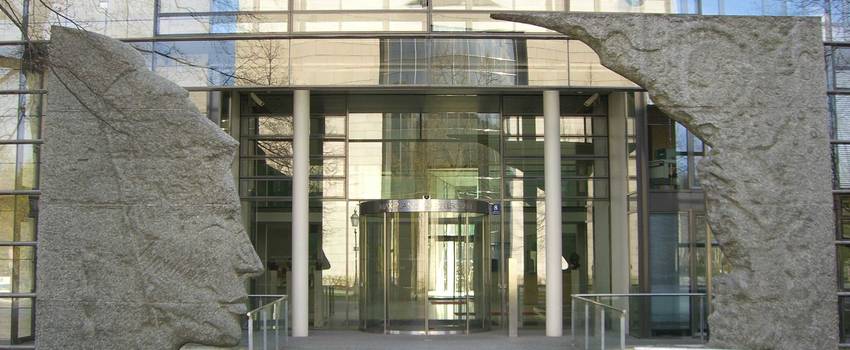 © Maximilian Dörrbecker
© Maximilian Dörrbecker
Max Planck Society
"The Max Planck Society is Germany's most successful research organization. Since its establishment in 1948, no fewer than 18 Nobel laureates have emerged from the ranks of its scientists, putting it on a par with the best and most prestigious research institutions worldwide. The more than 15,000 publications each year in internationally renowned scientific journals are proof of the outstanding research work conducted at Max Planck Institutes – and many of those articles are among the most-cited publications in the relevant field." (Source)
Institute
Max Planck Institute for Developmental Biology
"Contemporary biology covers an enormous scale, from research on basic cellular processes to predictions about global climate change. But this spectrum has not been continuous: while biologists have long known that organisms physically adapt to their natural environments, too often the underlying genetic, molecular and biochemical processes have remained a mystery. The MPI for Developmental Biology is uniquely poised to help close this gap. At the atomic level, we are investigating how protein machines work. At the molecular and subcellular level, we are studying how proteins and RNA molecules cooperate to regulate fundamental processes such as transcription, translation and signal transduction and how this is dependent on the location of proteins within the cell. At the tissue level, we are determining how cells interact to produce complex outcomes during development. Finally, at the organism level, we are asking how the naturally occurring interactions among microbes, plants and animals shape their genomes." (Source)
Map
Proteins mediate a vast array of functions in the body, like fighting invaders or transporting oxygen. Their remarkable properties are due to their three-dimensional structure which is acquired by a simple chain of molecules, a polypeptide, folding into a complex structure, the protein. This folding process is still not fully understood and hence also difficult to replicate in a laboratory. To learn more about how it works the research presented by ANDREI N. LUPAS in this video looked into the evolution of folded proteins. By comparing protein sequences, they identified common ancestors and found simple processes, such as repetition, are instrumental in allowing these to yield folded proteins: By repeating peptides in molecule chains, the researchers managed to create polypeptides that folded into proteins with a high success rate.
LT Video Publication DOI: https://doi.org/10.21036/LTPUB10264
A Vocabulary of Ancient Peptides at the Origin of Folded Proteins
- Vikram Alva, Johannes Söding and Andrei N. Lupas
- eLife
- Published in 2015




